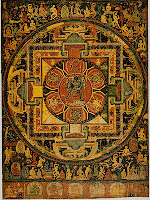A. Match the words with their meanings. a. wind- iii. to have many bends and twists b. morn- v. morning c. inn- ii. a small hotel, usually in the country d. wayfarer- i. person who usually travels on foot e. seek- iv. look for B. Complete the summary of the poem using suitable words or phrases given below. (Please insert the words in the blanks) a. a journey b. the road ahead c. up-hill c. in the affirmative d. a place d. an inn e. on the way f. fellow travelers g. someone h. everyone C. Answer the following questions. a. How far is the road up-hill, according to the guide? Ans: According to the guide, the road winds up-hill all the way, to the very end. To travel the road, it takes the whole day, from morning to night. b. What does the speaker doubt about the place to rest? Ans: The speaker doubts whether the darkness will hide the place of rest from their view. c. Who has travelled the road before? And: Other wayfarers have travelled the road before. d. What is the speaker’s seventh ...
.jpg)
.jpg)




